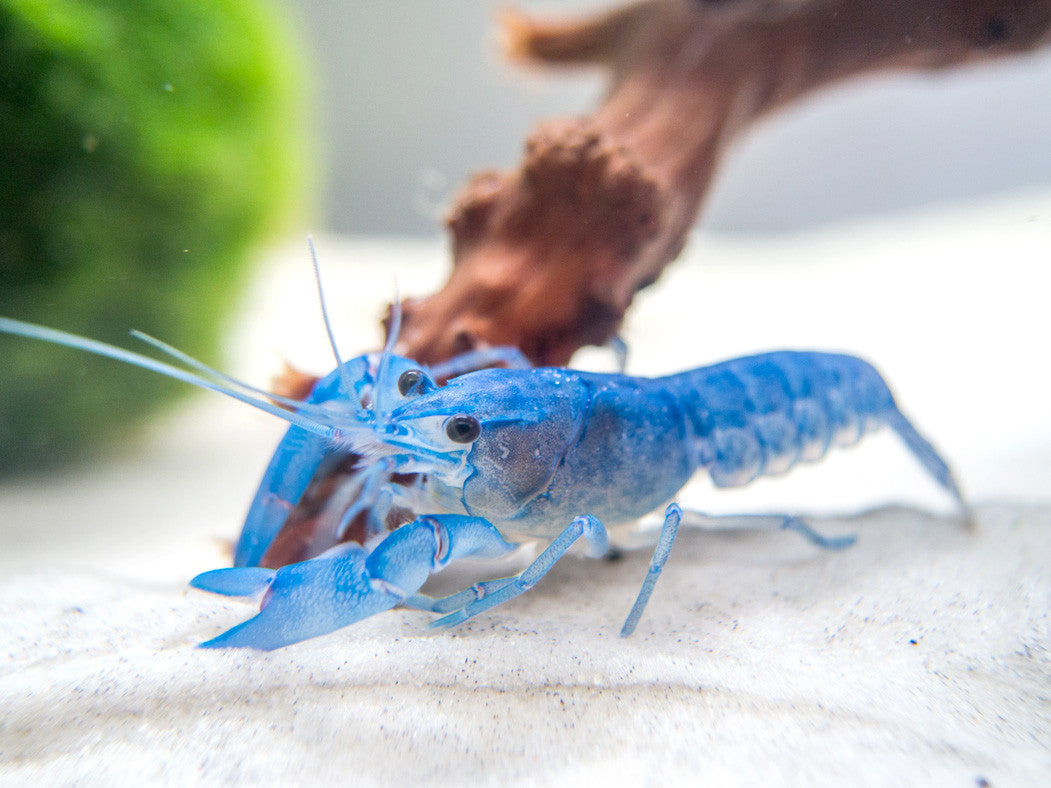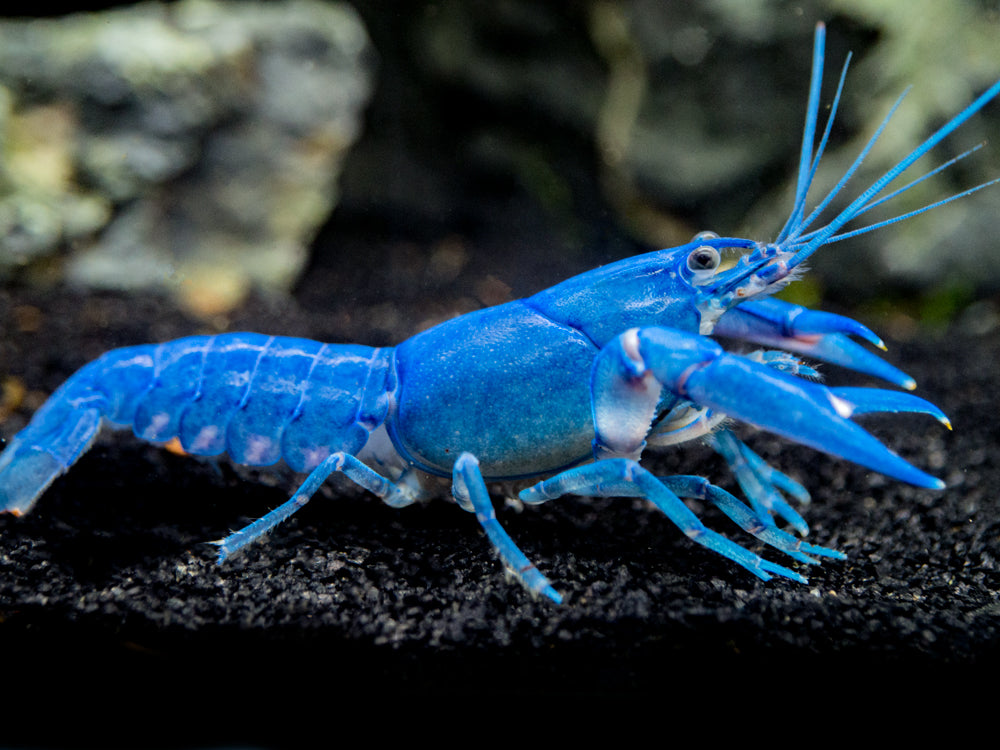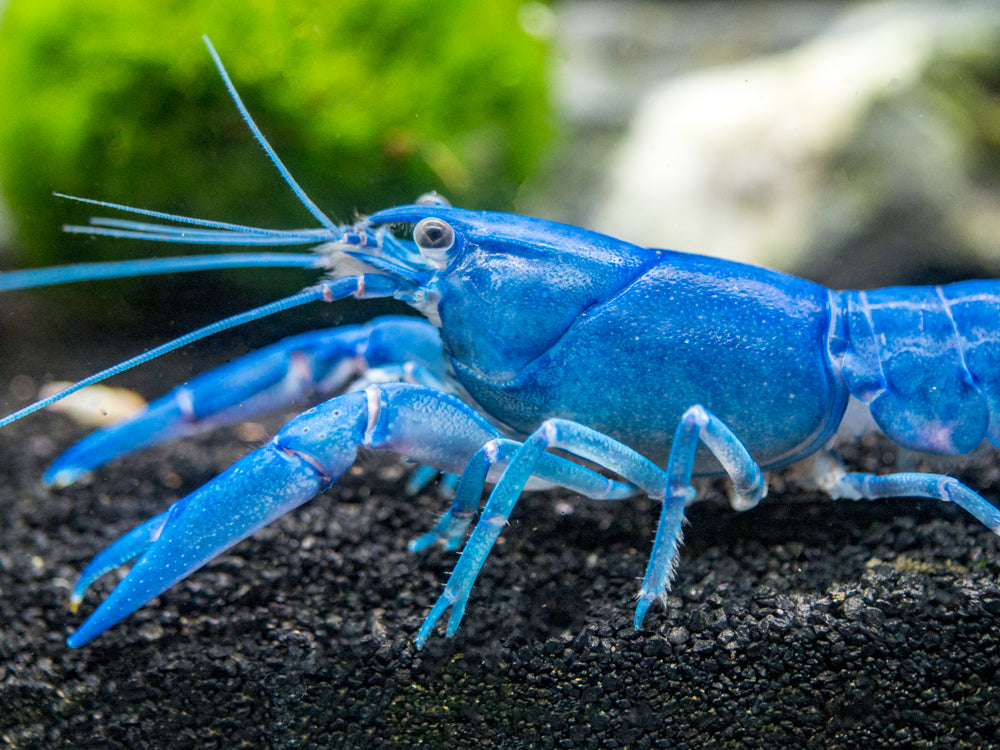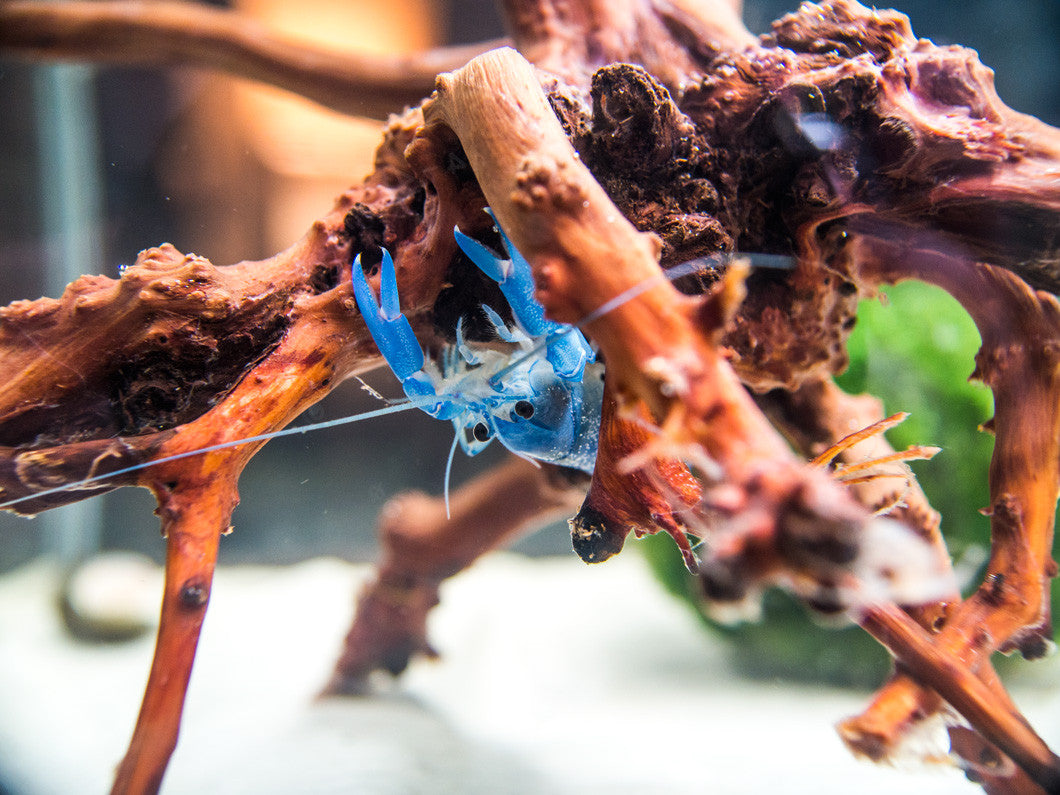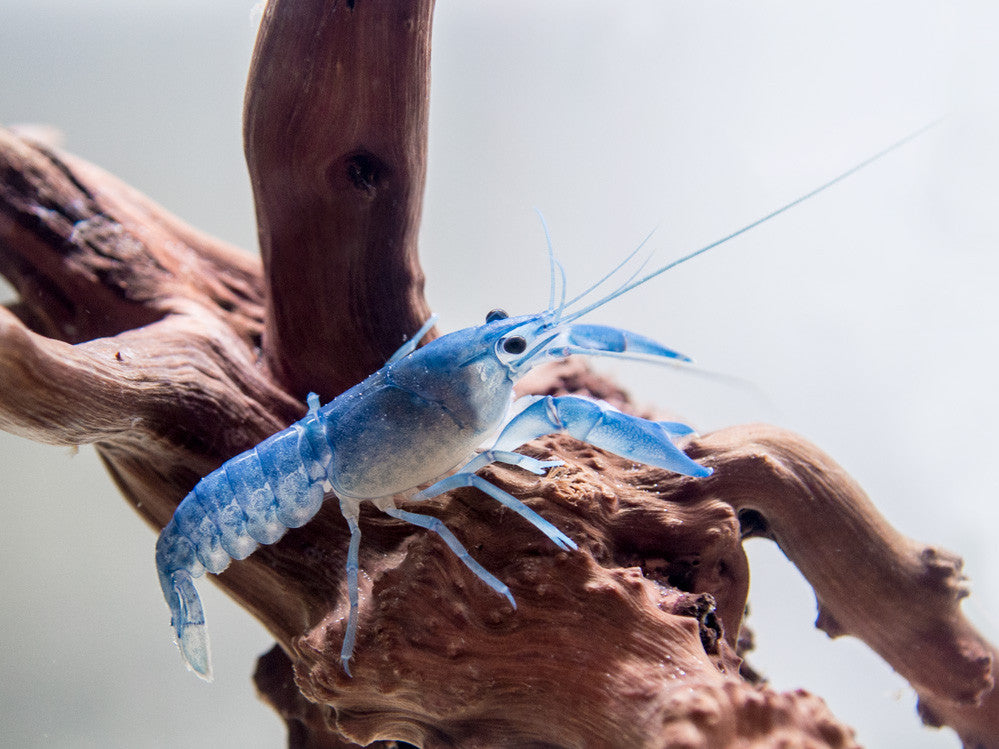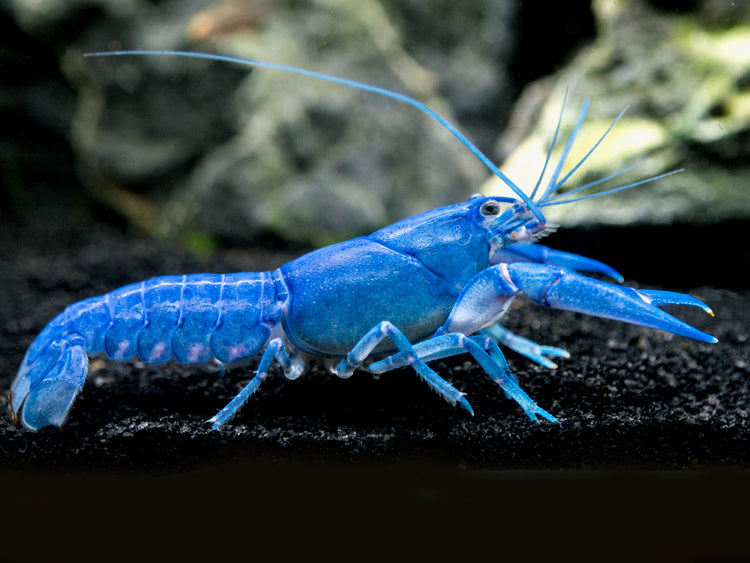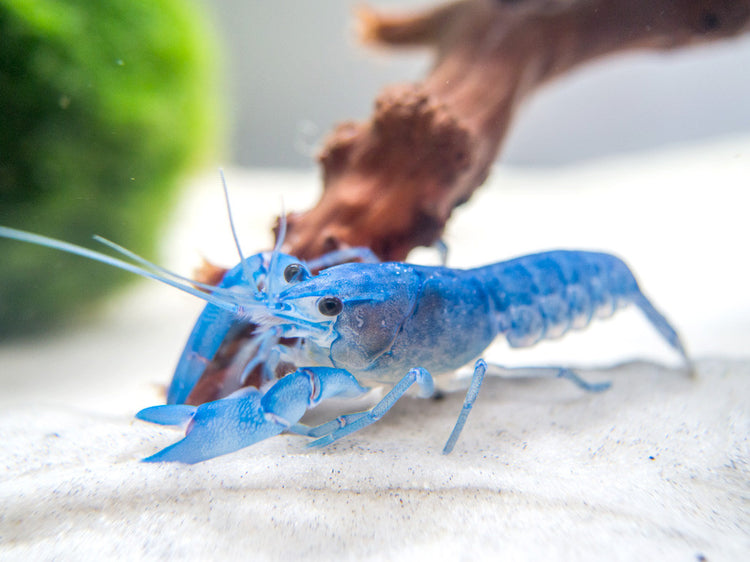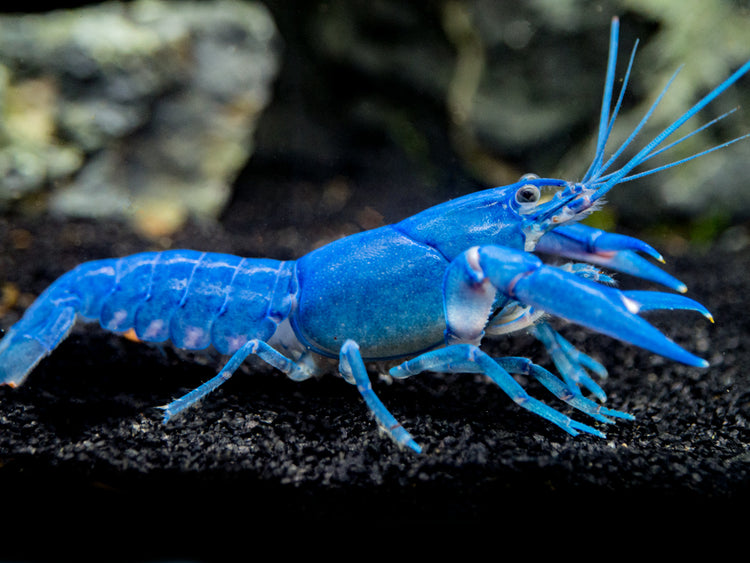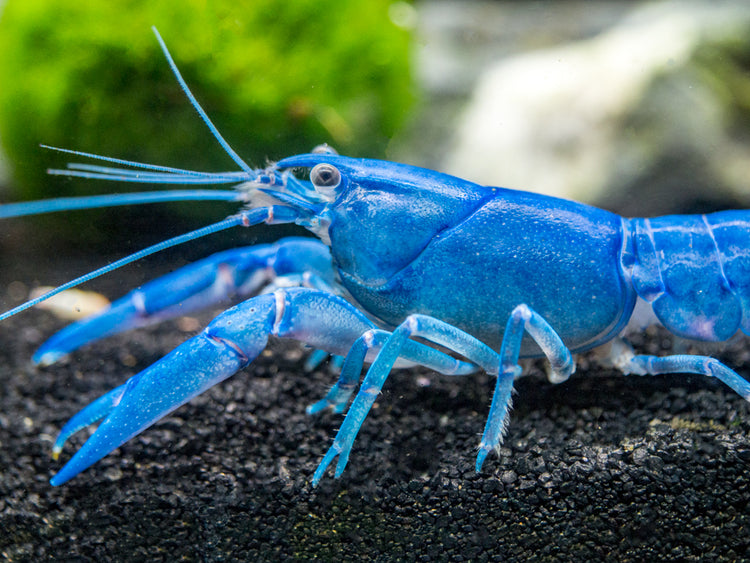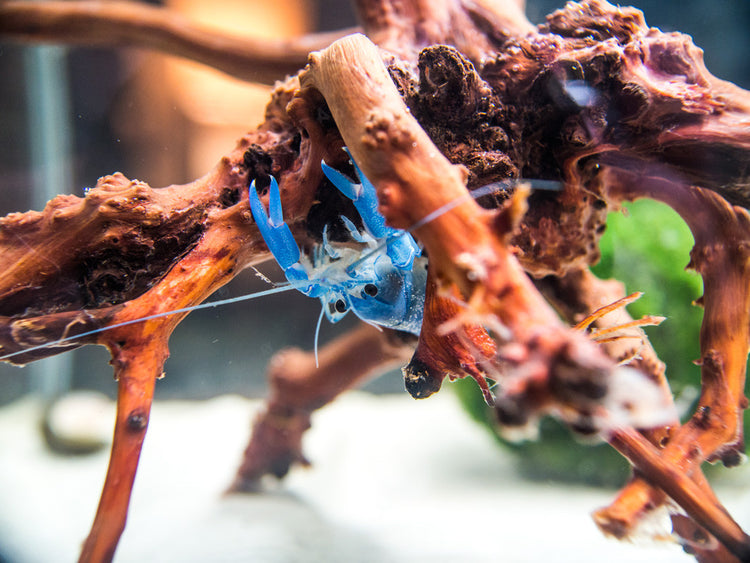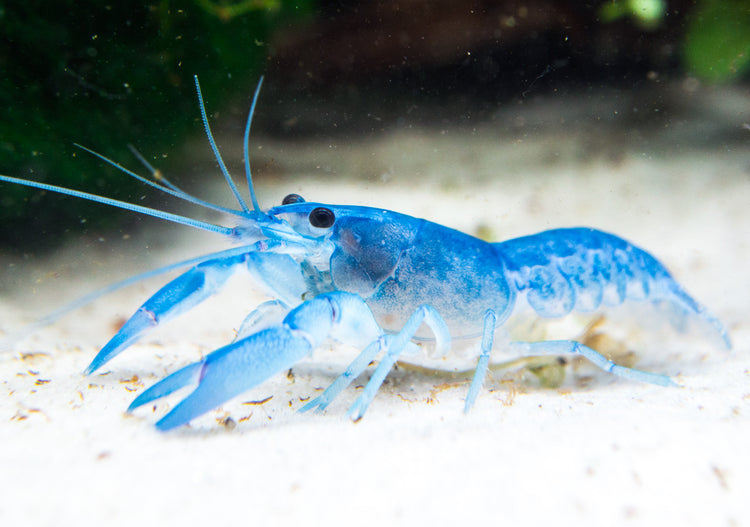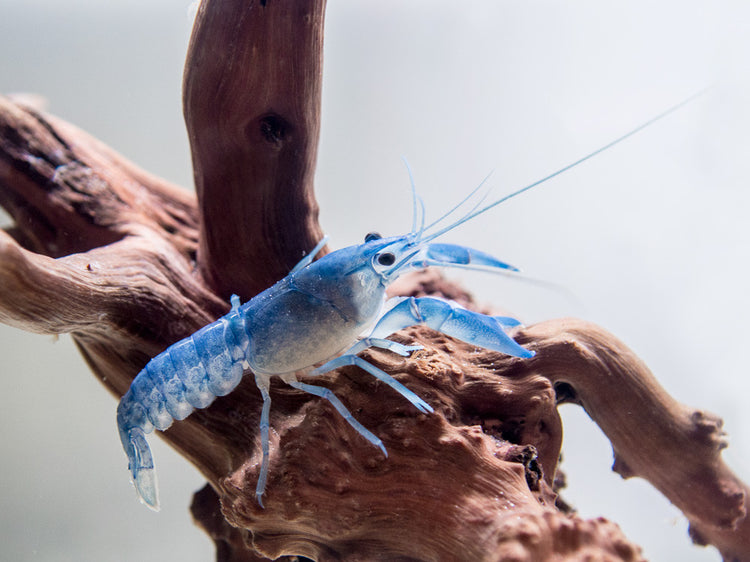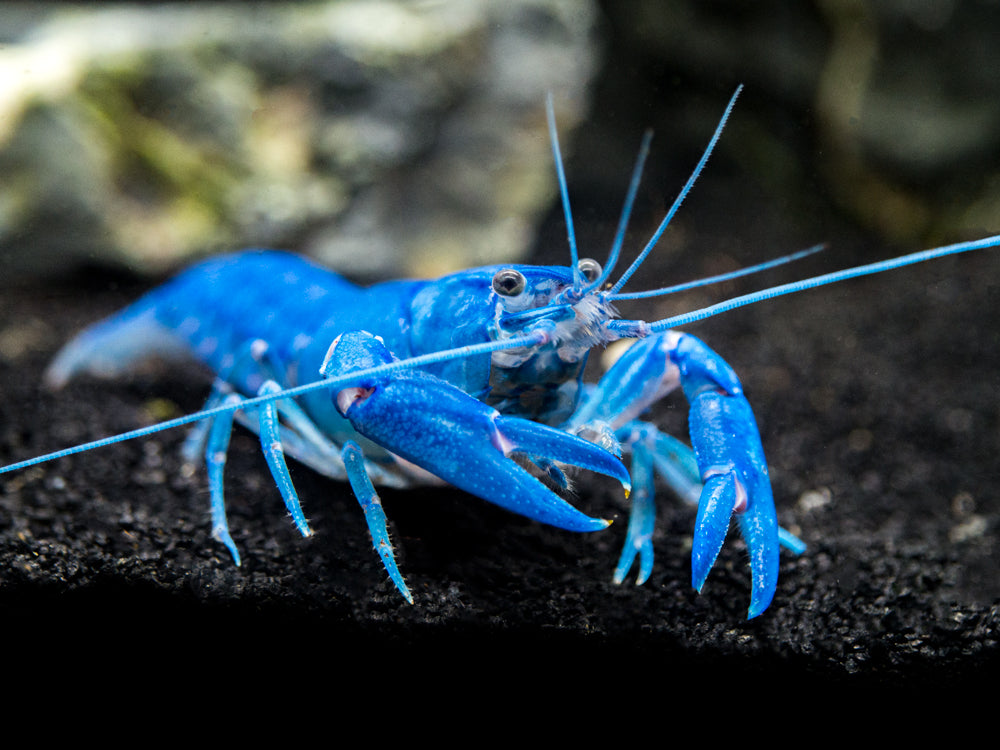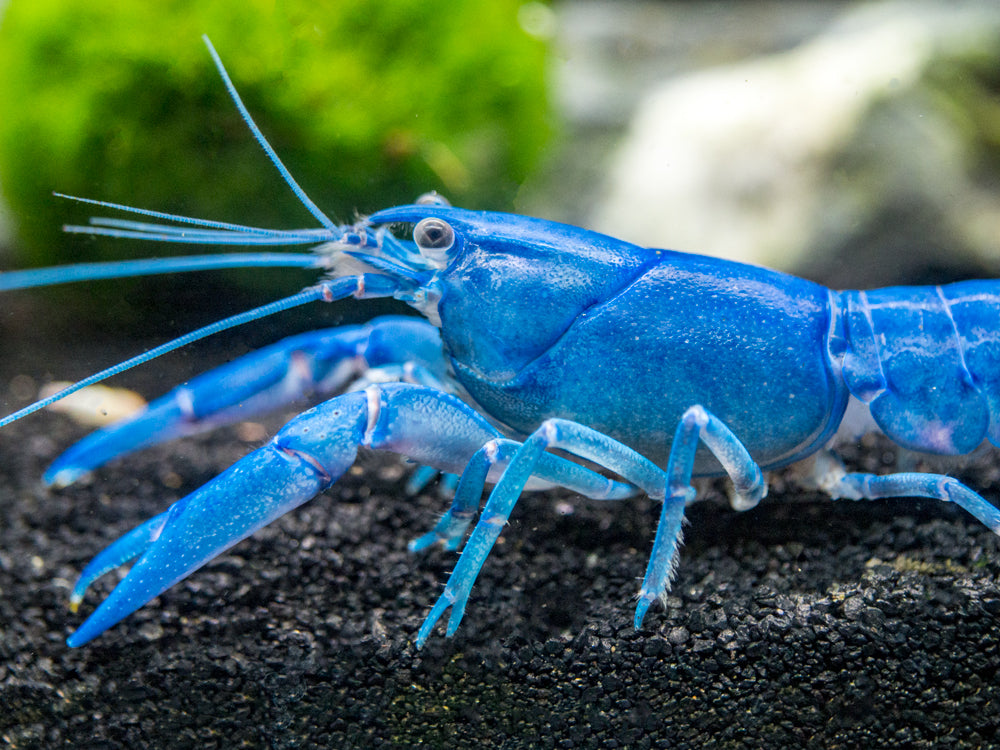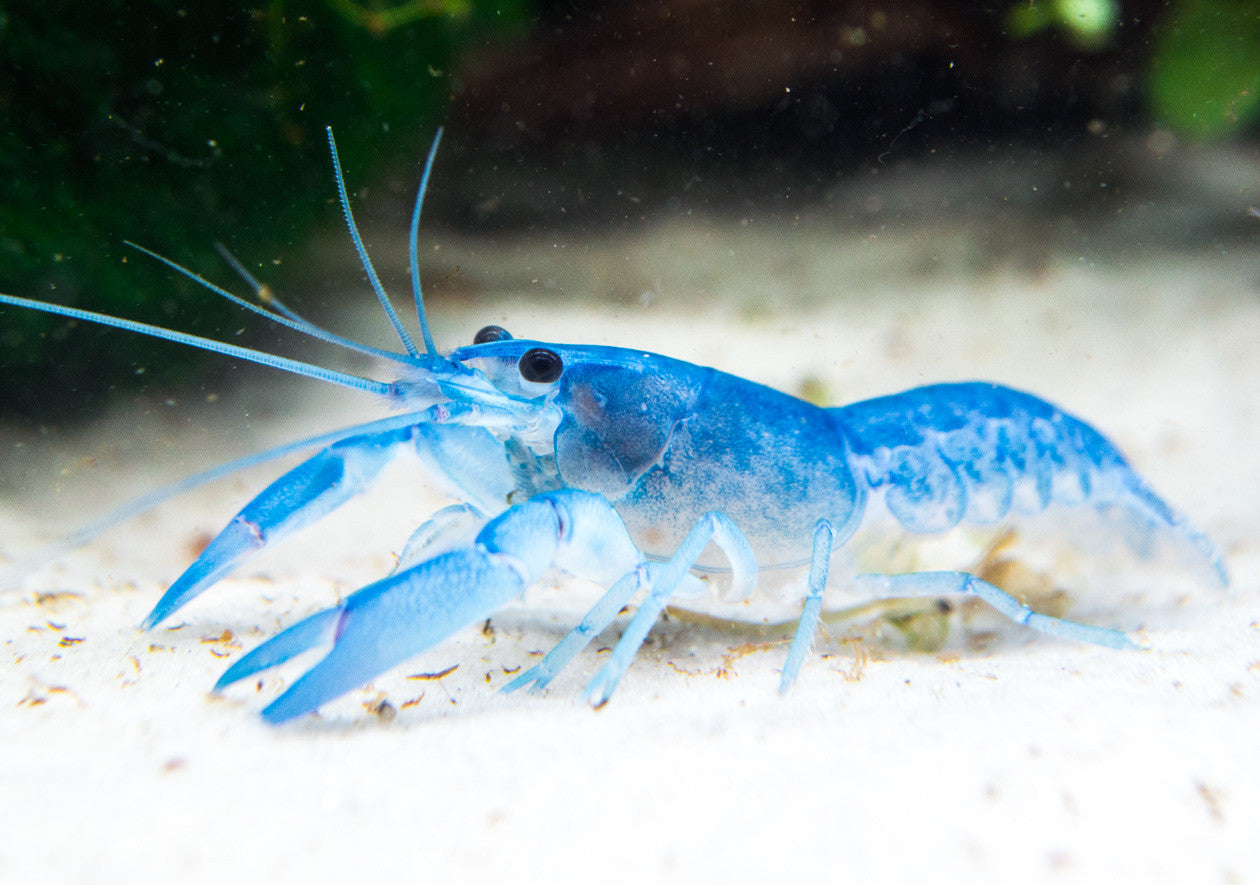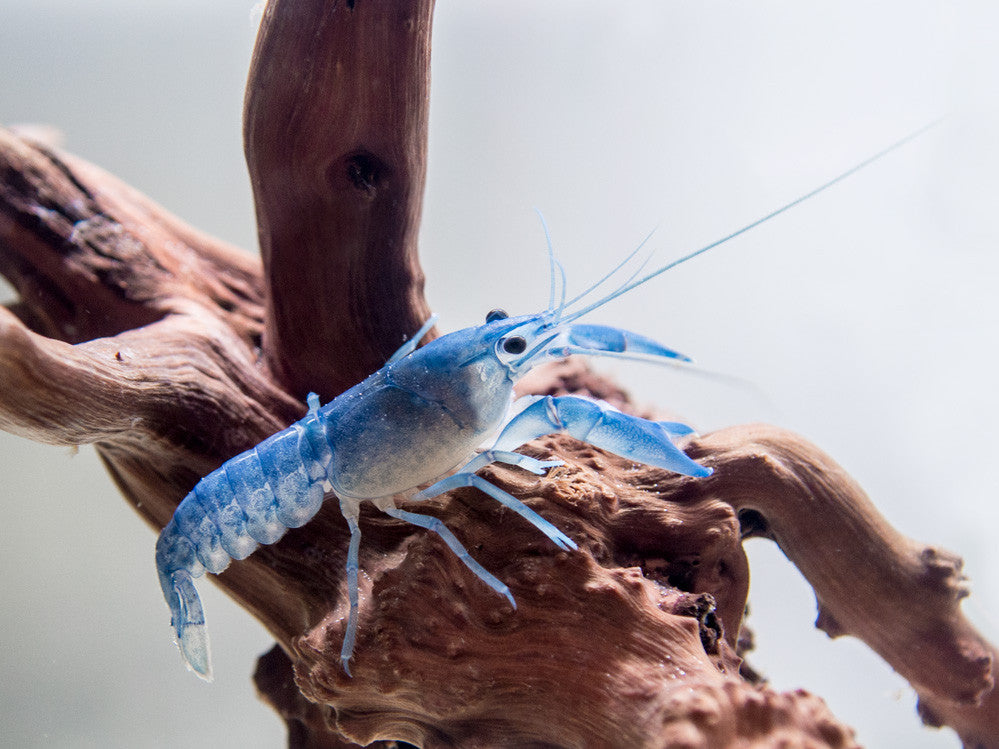Blue Pearl Crayfish (Cherax albidus) - Tank-Bred!
- In stock, ready to ship
- Backordered, shipping soon
Due to state restrictions on invasive species, we are not able to ship or sell any color morph of the Cherax sp. crayfish to the following state(s): California, Florida, Texas, and Wisconsin
This species is prohibited to own in the above state(s), meaning it is illegal to possess them live in these state(s). This includes possession for consumption, education, aquarium trade, or any other live trade.
* For the safety of our animals, we now ship Cherax crayfish exclusively via UPS Next Day Air. If your order contains this item, you will only see UPS Next Day Air as a shipping option during checkout *
The Blue Pearl Crayfish is possibly the most consistently and vibrantly blue crayfish of them all, and we are proud to offer top-notch, tank-bred specimens!
The Blue Pearl Crayfish (Cherax albidus) is an electric blue variation of its species and is native to Australia. This crayfish is also commonly known as the Blue Pearl Freshwater Lobster, though true lobsters do not exist in freshwater. The entire body and appendages of this crayfish are electric blue. They actually look very similar to Electric Blue Crayfish, but they are a different species and feature solid blue appendages. The Blue Pearl Crayfish breeds easily in the aquarium, but the fry are extremely slow growing. In fact, many of our specimens have bred in our tanks at our facility!
This particular crayfish is relatively active and spends plenty of time exploring the floor of the aquarium in search of food. The Blue Pearl Crayfish is an omnivorous scavenger and will eat most any meaty or plant-based foods. This crayfish should not be kept with ornamental live plants as it will eat them at a surprising rate. It is a skilled climber, so extra care must be taken to ensure that it does not escape its enclosure.
As it reaches adulthood, the Blue Pearl Crayfish will become relatively territorial, so it may behave aggressively towards other animals in the tank. It is important that ample hiding places such as rockwork, driftwood, or PVC pipes be provided. This is even more crucial when housing multiple crayfish in the same tank. Due to the size and waste production of this crayfish, a minimum 30-gallon, well-filtered aquarium is necessary for one adult. An aquarium of 55 gallons or larger can house multiple adults of similar size. This is a reasonably hardy animal, but regular water changes are vital to its optimal health. Other bottom-dwelling invertebrates and fish should not be kept with large crayfish. It is possible to keep mid- and upper-level, fast-swimming fish with the Blue Pearl Crayfish, but crayfish are opportunistic feeders and will generally eat whatever they can catch.
As with all of our crayfish, the coloration of the Blue Pearl Crayfish is EXTREMELY high quality - much higher quality than others on the market. This crayfish may TEMPORARILY change color and hide more than usual after molting, which may occur during shipping. If your crayfish is not blue and you find a molt in the bag or in your aquarium, do not worry; this is normal and the bright color will return in 2 weeks or less.
*IMPORTANT* Please "Choose a Variant" above before adding this crayfish to your cart. The variants we're currently offering are:
- 1 Male Young Adult - 2 to 4 inches
- 1 Female Young Adult - 2 to 4 inches
- 1 B-Grade Young Adult, unsexed - 2 to 4 inches (All of our “B-Grade” crayfish are simply specimens that are missing legs or claws. Loss of appendages is not permanent and happens commonly with crustaceans. They are completely healthy with excellent coloration and will completely regenerate lost appendages within 1 to 2 molts (about 2 to 3 months).
- 1 Juvenile, unsexed - 1+ inch (A younger and smaller variant of Blue Pearl Crayfish at a lower price than our young adult specimens. This is a particularly fast-growing, hardy species and will usually grow well into adult size and coloration within 1 to 3 months. In the meantime, any customers who choose to go with a juvenile specimen can save some money and experience the excitement of watching their little crayfish grow!)
- 1 B-Grade Juvenile, unsexed - 1+ inch (All of our “B-Grade” crayfish are simply specimens that are missing legs or claws. Loss of appendages is not permanent and happens commonly with crustaceans. They are completely healthy with excellent coloration and will completely regenerate lost appendages within 1 to 2 molts (about 2 to 3 months).
- Consistently excellent electric blue coloration
- Less aggressive than many other crayfish
- Easy to feed
- Excellent scavenger
- Possible to breed in the home aquarium
- Temperature: 68° - 85° F (20° - 29° C)
- pH: 6.5 - 7.5
- KH: 6 - 15 dKH
- Minimum tank size: 30 gallons
- Diet: Omnivorous. High-quality sinking pellets, plants, and freeze-dried or frozen meaty foods will be readily accepted. Cuttlebone should be added to the aquarium to supplement calcium, which will aid in exoskeleton production
- Social behavior: Can be aggressive/territorial with other crayfish, but is much less so than Procambarus species such as the Electric Blue Crayfish
- Origin: Tank-bred, but indigenous to Western Irian Jaya, Indonesia
- Average adult size: 5 - 6 inches (12.7 - 15.2 cm)
- Average purchase size: 2+ inches (5+ cm) for adults, 1+ inch (2.5 cm) for juveniles
- Recommended Aquatic Arts tankmates: Fast-moving fish (such as Celestial Pearl Danios, Rasboras, Guppies, etc.). While dwarf shrimp can be kept successfully with these crayfish, caution should be exercised, as the crayfish have been known to catch and eat slow, sick, or particularly small shrimp. Cichlids can be aggressive toward crayfish and should not be kept in the same tank. Bottom-dwelling tankmates should definitely be avoided.
For the safety of our animals, we only ship live fish, crabs, and select other inverts exclusively via UPS 1 Day Air. If your order contains this item, you will only see UPS 1 Day Air as a shipping option during checkout. If other items are in your cart that can ship with 2 day or standard shipping options the only shipping method you can still select is UPS 1 Day Air.
UPS 1 Day is a description of the duration of time a shipment will spend in transit once it has been shipped. This does not guarantee the package will be shipped the same or next day from which the order was placed.
Shipping Schedule for this service
Current Handling Time:
1-9 business days
Here at Aquatic Arts, we consider the welfare of the live animals we are shipping to be of the foremost importance. This process is much more involved than simply creating a shipping label and affixing it to a box. Depending on the order, it takes from 4 to 7 people to complete this process properly. We check the weather conditions here where they fly out of the Indianapolis UPS facility and the destination for each shipment. We start early each morning and go through a multi-step process to have the day's shipments prepared in time for the UPS pickup. The volume of orders in our system also affects the processing time. Therefore our stated handling time is 1-9 business days.
Shipping Rate
Pricing is by size of package needed to fill entire order and distance it must travel. It will be calculated at checkout.



